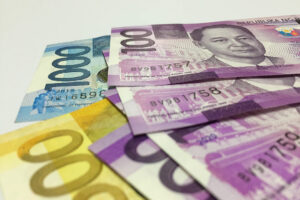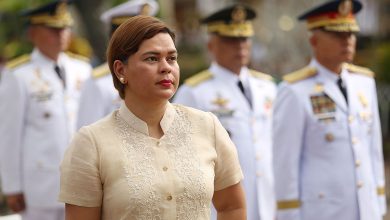Peso strengthens on PHL CPI, US jobs data

THE PESO rose against the dollar on Wednesday as Philippine headline inflation slowed in March and following the release of weaker US jobs data.
The local currency closed at P54.40 versus the dollar on Wednesday, appreciating by 9.5 centavos from Tuesday’s P54.495 finish, data from the Bankers Association of the Philippines’ website showed.
The peso opened Wednesday session at P54.45 per dollar. Its intraday best was at P54.31, while its worst showing was at P54.54 versus the greenback.
Dollars traded climbed to $1.24 billion on Wednesday from the $889.7 million recorded on Tuesday.
Philippine financial markets will be closed from April 6-11 for non-working days in commemoration of Holy Week and the Day of Valor.
The peso climbed against the dollar as inflation eased further in March, Rizal Commercial Banking Corp. Chief Economist Michael L. Ricafort said in a Viber message.
“The peso appreciated after the March local headline inflation level was recorded lower at 7.6%, below market expectations of 8%,” a trader likewise said in an e-mail.
Headline inflation eased to 7.6% from 8.6% in February, preliminary data released by the Philippine Statistics Authority on Wednesday showed. Still, this was faster than the 4% print in the same month last.
The March consumer price index (CPI) was the slowest since the 6.9% recorded in September 2022.
For the first three months, headline inflation averaged 8.3%, higher than the Bangko Sentral ng Pilipinas’ (BSP) forecast of 6% and the 2-4% target for the year.
A second trader said the peso was supported by a weaker dollar following weaker US jobs data.
The US dollar was stuck near two-month lows on Wednesday as weak economic data bolstered views that the Federal Reserve is near the end of its tightening cycle, Reuters reported.
The dollar index, which measures the currency against six peers, eased to a fresh two-month low of 101.43, after dropping 0.5% overnight. It was last at 101.57.
Data showed US job openings dropped to their lowest level in nearly two years in February, suggesting that labor market conditions were finally easing.
Job openings, a measure of labor demand, were down 632,000 to 9.9 million on the last day of February, the monthly Job Openings and Labor Turnover Survey, or JOLTS report, showed.
The peso appreciated as “markets priced in lower odds of another 25-basis-point (bp) Fed rate hike on May 3, 2023 at about 50% chance … that could be matched locally to maintain comfortable interest rate differentials to help stabilize the peso exchange rate and overall inflation,” Mr. Ricafort added.
The US Federal Reserve hiked its target interest rate by 25 bps at its March 21-22 meeting to a range between 4.75% and 5%.
Since March 2022, the Fed has raised rates by a total of 475 bps.
For its part, the BSP hiked benchmark interest rates by 25 bps in its March 23 review, bringing its key rate to 6.25%.
The Philippine central bank has raised rates by a cumulative 425 bps since May 2022.
PESO SEEN RISINGMeanwhile, MUFG Global Markets Research expects the peso to start strengthening against the dollar in the second half on expectations of a narrower current account deficit.
“Overall, we think the peso will be more resilient in 2023 compared with last year, but will not outperform regional Asian currencies,” MUFG Global Markets Research said in a report on Tuesday.
“Key for the peso’s outlook is our expectation for a narrower current account deficit in 2023, driven by lower oil prices, slower domestic demand, coupled with resilient business process outsourcing services exports and remittances,” it said.
It sees the peso closing the second quarter at P55 per dollar, weaker than its P54.36 finish in the first quarter.
The local unit could then strengthen to P54 against the greenback in the third quarter and end the year at P53.50 a dollar.
For the first quarter of 2024, the peso could end at P53 a dollar.
MUFG Global Markets Research said it expects Philippine gross domestic product (GDP) to expand by 6% this year as pent-up demand from the economy’s reopening after the pandemic begin to fade, with elevated inflation and higher interest rates also expected to affect consumption.
“We view this development as good from a macro stability perspective, as the economy was running a little too hot last year,” it said.
Philippine GDP grew by 7.6% in 2022.
MUFG Global Markets Research also expects the central bank to hike borrowing costs by another 25 bps in its May 18 meeting to bring its key rate to 6.50% and then keep its policy settings steady thereafter. — AMCS with Reuters




